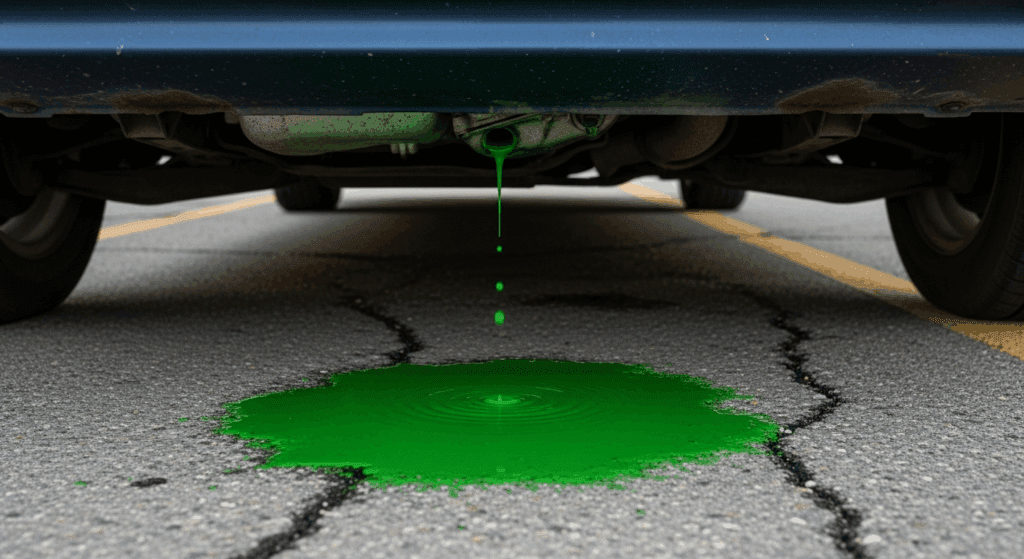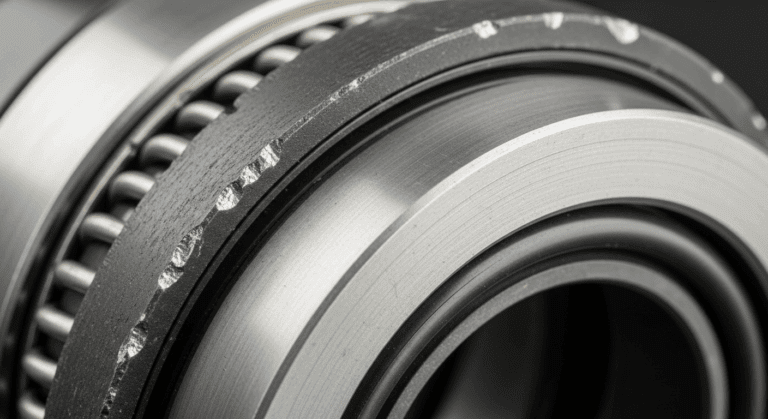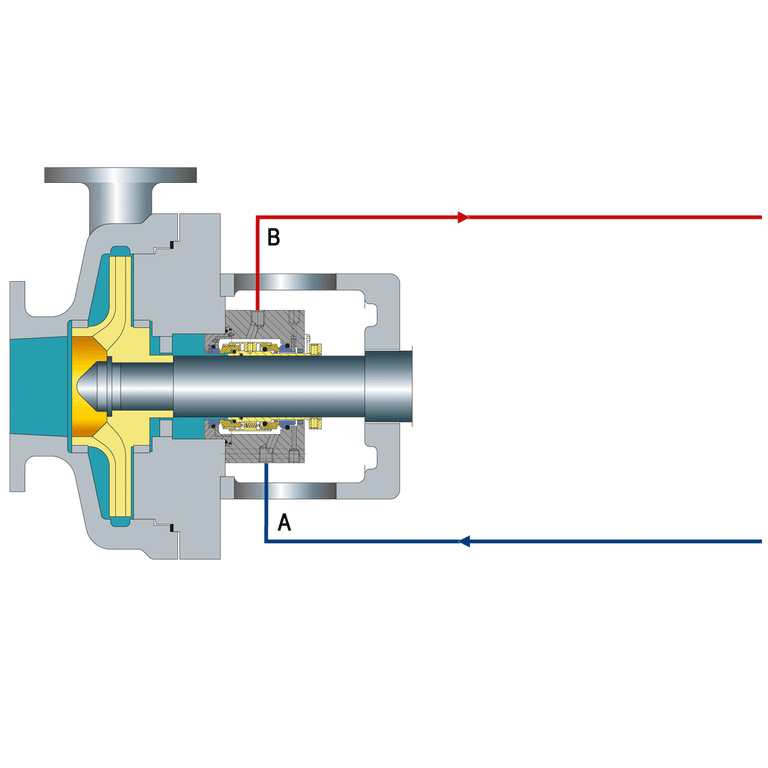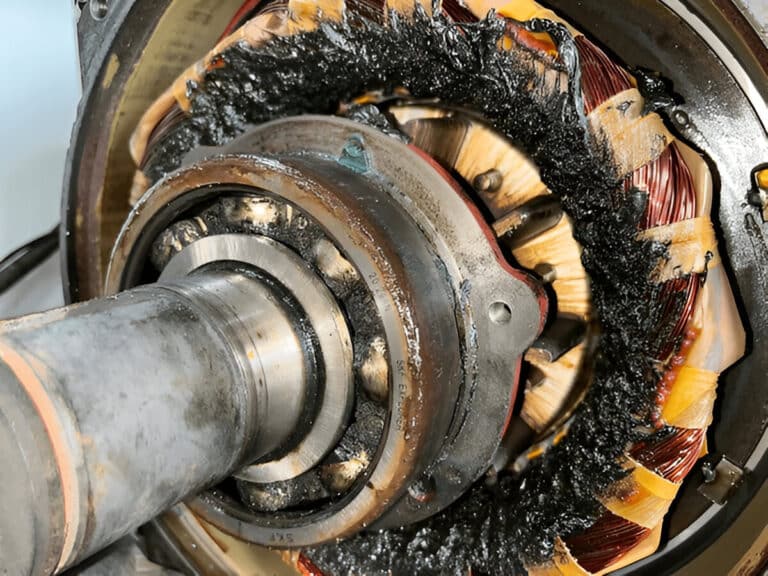Identifying car fluid leaks by their color can save you from expensive repairs and dangerous breakdowns. Each fluid in your vehicle has a distinct color that tells you exactly what’s leaking and how urgently you need to fix it.
A puddle under your car doesn’t always mean disaster. But knowing whether it’s harmless water condensation or critical brake fluid could be the difference between a safe drive and a roadside emergency.

Transmission Fluid
Fresh transmission fluid is bright red or pink, while older fluid turns dark red or brown. This slippery, oily liquid typically leaks from the center of your vehicle where the transmission sits.
You’ll often notice transmission fluid spots after your car has been parked overnight. The puddles appear directly under the transmission pan or along the transmission cooler lines.
Engine Oil
Engine oil starts as light amber or golden brown when new, then darkens to black as it ages. This is the most common leak you’ll find under your car, usually appearing near the front of the engine.
Oil leaks leave dark, greasy spots that feel slick between your fingers. They’re different from other fluids because they don’t evaporate and often leave permanent stains on driveways.
Coolant/Antifreeze
Coolant appears bright green, orange, pink, or blue depending on the type your car uses. These sweet-smelling leaks often come from a failing water pump, radiator, or damaged hoses.
Your water pump is particularly prone to leaking as it ages. Look for coolant dripping from the weep hole on the pump’s underside – this built-in feature warns you when the pump’s seal is failing.
Coolant puddles typically form under the radiator at the front of your car or near the water pump on the engine’s side. The liquid feels slimy and has a distinctly sweet smell that’s unmistakable once you know it.
Brake Fluid
Brake fluid ranges from clear to light brown and feels oily but less slippery than engine oil. You’ll find these leaks near your wheels or under the brake master cylinder near the firewall.
This is the leak you never want to ignore. Brake fluid leaks mean your braking system is compromised and could fail without warning.
If you see any fluid near your wheels or brake components, don’t drive. Have your car towed to a mechanic immediately – your safety depends on it.
Power Steering Fluid
Power steering fluid looks reddish-brown or light brown and leaks from the power steering pump, hoses, or steering rack. You’ll notice these puddles toward the front of your vehicle, often on the driver’s side.
When power steering fluid runs low, your steering wheel becomes hard to turn, especially at low speeds. You might also hear a whining noise when turning.
While you can still steer without power steering fluid, it requires much more effort. Top off the fluid and fix the leak before it damages your power steering pump.
Windshield Washer Fluid
Washer fluid is bright blue, green, or orange and has a thin, watery consistency. It’s the least concerning leak on this list since it doesn’t affect your car’s mechanical operation.
These leaks usually come from cracked washer fluid reservoirs or damaged hoses. The fluid smells slightly like window cleaner and evaporates fairly quickly.
You can keep driving with a washer fluid leak. Just remember to carry extra fluid for cleaning your windshield, especially during winter or bug season.
Fuel (Gasoline or Diesel)
Gasoline is clear to light yellow, while diesel appears light yellow to clear. Both have strong, unmistakable petroleum odors that hit you immediately.
Fuel leaks are serious fire hazards. You’ll smell gasoline before you see it, and the puddles evaporate quickly, leaving rainbow-colored residue.
Never drive with a fuel leak. Even a small leak near hot engine components could ignite. Call for a tow immediately.
Water (Condensation)
Clear water dripping from your car is almost always harmless condensation from your air conditioning system. It’s perfectly normal on hot days when you’re running the AC.
This water drips from under the passenger side of the vehicle where the AC evaporator drain is located. It has no smell and evaporates quickly.
If the puddle is truly clear and odorless, you have nothing to worry about. It’s just your AC doing its job.
FAQs
Why is there oil under my car but the oil level is fine?
Your car might be leaking another fluid that looks like oil, such as power steering or differential fluid. Also, small oil leaks may not immediately show on the dipstick, so continue monitoring the level weekly.
What happens if I mix different colored coolants?
Mixing incompatible coolants can cause them to gel up and clog your cooling system, including the water pump. Always use the coolant type specified in your owner’s manual or flush the system completely before switching types.




